Discover Conscious Creators — Make A Life Through Your Art Without Selling Your Soul
Conscious Creators — Make A Life Through Your Art Without Selling Your Soul

Conscious Creators — Make A Life Through Your Art Without Selling Your Soul
Author: Sachit Gupta
Subscribed: 51Played: 1,029Subscribe
Share
Description
Through intimate and insightful interviews with authors, actors, musicians, entrepreneurs and other podcasters, you'll learn tools and tactics to 10x your creativity and grow your business and life.
Learn more at www.creators.show.
Learn more at www.creators.show.
63 Episodes
Reverse
“I want self-managed people, especially for Halocracy. It's a self-managing environment, that needs people that are capable of individual self-management to be part of a team that is self-managing.” — Brian Robertson On this week's episode, Sachit (@sachitgupta) sits down with Brian Robertson (@h1brian) to discuss a management framework designed to get things done using a system of agile, self-organizing networks. Brian is an entrepreneur, organization-builder, recovering CEO, and the Pioneer of Holacracy - an exciting and revolutionary management philosophy that turns everyone into a leader. The philosophy distributes authority and decision-making throughout an organization, and defines people not by hierarchy and titles, but by roles. Tune in to hear Brian explain how the Holacracy method can help you create structures and ways of making decisions that empower everyone in the organization. Make sure you have your notebooks ready because this one's a cracker! Follow our host, Sachit Gupta on Twitter and sign up for the Creators Collective Newsletter. Do you want to learn how to make a living as a creator? Check out the CreatorsMBA. (00:00) - Introduction (02:03) - The main idea behind Holacracy (06:50) - How Brian discovered and built Holacracy (08:41) - To create clarity, ask these essential questions (11:30) - The one thing people misunderstand about Holacracy (13:13) - The modern management hierarchy (17:04) - Where to start when implementing Holacracy (20:08) - Power and ownership under a Holacracy (23:17) - How to distribute power throughout an organization (25:45) - Support and mentorship in a Holacracy (28:35) - Imagine having the best firing system in the world (34:15) - Key steps to ensure you’re hiring the right people (37:18) - Patterns that inform great hiring (44:10) - Pitfalls to look out for when implementing Holacracy (47:30) - How to avoid slipping back into old management habits (50:19) - How long it takes from implementation to success with Holacracy (57:10) - Ways Holacracy creates order, structure, and alignment in an organization (01:01:02) - How to properly manage remote teams (01:03:04) - Tips for running better meetings (01:07:05) - How Holacracy drives creativity in teams (01:11:02) - The story of Medium and Zappos using Holacracy (01:15:33) - The types of companies currently having success with Holacracy (01:18:45) - Brian’s definition of a conscious creator (01:19:57) - Parting thoughts
On this week's episode, Sachit (@sachitgupta) sits down with Regina Gerbeaux (@_rpgbx) to discuss how creative founders can find business operators, onboard them, and create action trackers that keep everyone on the team efficient and accountable. Regina is the executive coach for top-tier CEOs, Operators, and Investors. She is best known for her work as an operator scaling companies in size and revenue using the Mochary Method. Regina is also an excited founder of a bootstrapped music business she started in college that hit $1M of annual recurring revenue by the time she was 20. Tune in to hear Regina explain the primary role of a business operator, the resources they need to be successful, and how you can help them deal with the added stress of juggling multiple positions in the business. Follow our host, Sachit Gupta on Twitter and sign up for the Creators Collective Newsletter. Do you want to learn how to make a living as a creator? Check out the CreatorsMBA. [00:00] Introduction [01:11] Why creative founders need business operators [04:58] You don't have a company if you don't have people [08:12] How to find people who are an ideal fit for your culture [11:33] Don't underestimate the importance of great onboarding [17:39] Reasons you should never hire takers [24:16] How the CEO's psychology defines a company's leadership and success [30:00] Benefits of cultivating trust with your people [32:45] Effective ways to stay grounded [37:35] How much process is too much process? [42:05] How to start building processes from scratch [48:48] Finding your zone of genius [53:42] What are the different stages of an operator? [01:02:11] How to create an environment where your operators thrive [01:06:55] Why investing in your operators makes for good business [01:08:30] 30-60-90 day plan: How to onboard new operators with ease [01:14:55] The dos and don'ts of giving feedback to new operators [01:19:10] Understanding the journey of creators [01:23:53] You need to learn to let go [01:26:31] What Regina is most excited about going forward [01:35:40] Parting thoughts Links and Resources: Regina's LinkedIn Connect with Regina via Twitter Coachingfounder.com Give and Take: A Revolutionary Approach to Success by Adam M. Grant PhD
“You must succeed. This company cannot take care of its people, unless the company itself is succeeding. So you can't have bloat, you can't have dead-weight. You need everybody to be at the tip, top shape, tip, top form, really pushing like superstars do.” — Faith Meyer This week Sachit (@sachitgupta) chats with Matt Mochary (@mattmochary), CEO and Coach and Faith Meyer (@FaithKMeyer), certified Executive and CEO coach at Mochary Method — A company that provides the practical tools that a CEO needs to be an effective leader. Matt is a CEO coach primarily dealing with heads of tech investment firms and companies on how to be exceptional leaders and build the best organizations possible. Faith, on the other hand, is a CEO & Executive Coach with Mochary Method and is passionate about helping people tap into their fullest potential. The trio has an amazing discussion that goes all the way from coaching Sachit live, to deep dives on outstanding company cultures, leadership, team behaviors, and the importance of joy in a company. You won't want to miss this! Follow our host, Sachit Gupta on Twitter and sign up for the Creators Collective Newsletter. Do you want to learn how to make a living as a creator? Check out the CreatorsMBA. [00:00] Introduction [01:10] The benefits of having deep friendships with your clients [03:55] How to create a healthy boundary with your coaching clients [06:15] Live coaching session: Sachit's frustrating experience building the A-Team of podcast creation [15:20] Creating a good culture that everybody wants to be a part of [17:00] How to make your people feel good and inspired [21:15] Great leaders show their people that they genuinely care [22:55] Examples of companies that have successfully built great cultures [28:00] Changing and upgrading your team's behavior [34:25] How to create a culture of transparency from scratch [39:20] Ways to create joy at work and spark a culture of happiness in your team [45:30] Why every leader needs to conduct an energy audit [52:52] Is it possible to train an EA to run your business? [01:05:55] The two types of people in the world [01:07:35] The art and science of coaching [01:13:22] Matt and Faith share the thing about coaching that brings them joy [01:19:50] What coaching is and what coaching is not [01:22:45] Common coaching complains and how Faith handles them [01:23:45] Understanding the delegation trajectory and how leadership evolves over time [01:27:30] The main idea behind a growth spiral [01:31:50] How businesses can act as a force for good [01:34:00] Parting thoughts Resources Heard: how to make people feel it (2 min) Motivating your team (3 min) Brainstorming written (2 min) Loudest voice in the room (1 min) Energy Audit (3 min) CEO role (2 min) Onboarding a new hire (3 min)
“If you want to be a conscious creator, part of what you need to do is become skillful in facilitating the dialogue between your conscious mind and your subconscious.” — Charles M. Jones This week Sachit (@sachitgupta) chats with Charles Jones (@adaptaboy). Charles began the research project that led to the Effectiveness Theory of Emotion in 1982 while pursuing an interdisciplinary degree at the intersection of Computer Science, Cultural Anthropology and Evolutionary Psychology at the University of Michigan. After graduating with a B.S., Charles continued the research project in his spare time for the next 35 years, studying with Fernando Flores (Ontological Coaching), Richard Strozzi Heckler (Somatic Leadership) and Marshall Rosenberg (Nonviolent Communication). In parallel, Charles had successful careers as a software engineer and organizational and leadership development consultant. Follow our host, Sachit Gupta on Twitter and sign up for the Creators Collective Newsletter. Do you want to learn how to make a living as a creator? Check out the CreatorsMBA. 0:00 - Introduction 02:10 - Why do you describe yourself as the Maverick Cognitive Psychologist? 07:10 - Looking back at your high school period, do you think you were suppressing your emotions? 17:40 - How do different emotions work? 30:17 - How to stop procrastinating and start working 36:22 - How does your body keep a score of your emotions? 1:03:25 - How do we cultivate emotional literacy amongst people? 1:10:45 - Stories of people who have changed by reading your book 1:14:20 - Fast five questions with Charles 1:26:25 - Closing Remarks
“You got to like people, and you gotta recruit the people you want to be around. And then treat them cool and make sure you like your partner. And then find someone who can do organizational things.” — Michael Lovitch This week Sachit (@sachitgupta) chats with Michael Lovitch (@michaelovitch) and Hollis Carter (@hollisc), co-founders of Baby Bathwater Institute — A community comprised of some of the world’s leading minds and entrepreneurs, with a focus on helping bootstrapped entrepreneurs navigate the crazy world of business ownership while having good times and making lifelong friendships. Hollis Carter is a serial entrepreneur and avid skier. He started his entrepreneurial journey in the early 2000’s, founding multiple companies, including a SAAS company he built into a 7-figure virtual business in less than a year. In 2013, he became a founding investor in Utah’s Powder Mountain Ski Resort. Michael Lovitch, MA is a former special education professional, over-educated grad student, and floundering tech sales guy who decided at the age of 34 to take the entrepreneurial path because nothing else was working. He started a publishing company in the psychology space that ended up being a 7-figure endeavor, then parlayed that into a physician-based nutritional supplement company (RealDose Nutrition) thatended up with annual revenues of $50 million dollars before he sold out his stake. Follow our host, Sachit Gupta on Twitter and sign up for the Creators Collective Newsletter. Do you want to learn how to make a living as a creator? Check out the CreatorsMBA. 00:00 Introduction 00:26 What is a successful community? 09:19 When did your events start turning into a community? 13:55 How do you encourage your community members to connect with each other? 17:21 The process by which people come into baby bathwater 21:41 Patterns in people from the same type of business 26:53 How to create a good experience for people 37:00 How to deal with people that take advantage of the community 43:17 How to get feedback from the members of the community 47:40 What you should be thinking about in order to build a successful community 53:56 How to agree in a moment of disagreement 55:54 The vetting process for the Baby Bathwater community 58:12 In the process of building the community, what have you learned about yourselves? 1:02:29 What does it mean to be a conscious creator? 1:07:21 Closing Remarks
“Persuasion doesn't mean to manipulate. Intention is everything. If it isn't in the best interests of the person you're persuading, you probably shouldn't do it.” — Dave Lakhani This week Sachit (@sachitgupta) chats with Dave Lakhani, former Entrepreneur, Founder, C level executive and event producer. As a founder, Dave started more than a dozen successful companies. Several of the companies he led have been on the coveted Inc. 500 list. He successfully set new sales and marketing records at every company he was with. As a consultant, he worked with more than 500 companies to develop profitable growth strategies. As a professional speaker, he addressed more than 2 million people in the past 15 years, and his books have reached hundreds of thousands of people. Follow our host, Sachit Gupta on Twitter and sign up for the Creators Collective Newsletter. Do you want to learn how to make a living as a creator? Check out the CreatorsMBA. 02:53 - Three things that people want in life 08:25 - What makes Donald Trump a great influencer and persuader? 19:35 - How to read people and spot lies 32:45 - Practical tactics and hero’s journey 58:46 - Books recommendations
“Creators need to understand that the game being played around them is rigged. And basically, if they don't understand a different way to play this game, they will get sacrificed in the algorithm and burnout because the platforms doesn’t care. — Sachit Gupta Recently I was a guest on Creators Are Brands with Tom Boyd — Creator of @BonusFootage on TikTok and Instagram, creator strategist for billion dollar brands, and all around hilarious person. Highly recommend his podcast! In this episode we discuss content strategies, inventory, and 6-figure sponsorship deals. After re-listening to this podcast, I knew I had to share it here, with you. Follow our host, Sachit Gupta on Twitter and sign up for the Creators Collective Newsletter. Do you want to learn how to make a living as a creator? Check out the CreatorsMBA. (0:00) - Introduction (03:56) - What is Platforms Media? (06:00) - Who the first person that anyone should bring on in their team, is. (09:14) - How to start playing the content game differently (16:15) - How to apply the 3M Method to fine-tune your niche (19:40) - Is there a blueprint for six-figure sponsorship deals? (22:55) - Selling content inventory in advance (32:10) - Selling content inventory for short-form content — Should you do it? (34:30) - How you can build a team & start monetizing your audience (41:08) - How to cater to cold leads and inbound leads (46:09) - Should you partner with influencer agencies? (48:55) - What infrastructure have you built for recording & delivering the content? (52:45) - Who the first person is that you should partner with for content distribution (1:02:45) - Closing remarks
“If you have good people and the right person in the seat, they're going to have a better hit rate than you. Which, may be jarring to people who are like, “I'm really good at business.” Well, it turns out, you, with limited information and partial focus, is not better than somebody else.” — Michael Girdley This week Sachit (@sachitgupta) chats with Michael Girdley (@girdley), business entrepreneur and investor. Michael is Chairman and co-founder of Dura Software, the second-largest software company in San Antonio, Texas. His Holding Company includes a variety of businesses including Codeup, Effectual Ventures (a venture studio), Red Runner Coffee, Near (a talent platform), and others. Follow our host, Sachit Gupta on Twitter and sign up for the Creators Collective Newsletter. Do you want to learn how to make a living as a creator? Check out the CreatorsMBA. (0:00) - Introduction (02:15) - The difference between a CEO, an operator, and an idea guy (03:30) - The transition from being an operating CEO to a holding company’s CEO (08:47) - Describing the HoldCo model and why he switched to it (13:46) - Advantages & disadvantages of the HoldCo structure Vs one company model (21:08) - How he quick started the HoldCo model of operating (26:45) - What he has learned about hiring and retaining top performers (34:02) - The process of finding & hiring CEOs, with some examples (39:20) - Tests or questions you ask a candidate to check if they’re a good fit (46:52) - How do you separate yourself from being a HoldCo’s CEO from a company’s CEO? (51:21) - The day-to-day differences between being an operating CEO Vs a HoldCo CEO (53:43) - The moment when Michael realized he don't know everything (57:12) - What the operations of HoldCo actually looks like (1:04:57) - Some of the early mistakes in the HoldCo model and how to avoid them (1:10:33) - Rapid fire questions with Girdley (1:17:35) - Closing remarks
“More than half of the people I talk to are burned out and that's why they want to sell. And if you're burned out, it's not too late because you can still sell the business, but it's not the optimal time.” — Alexis Grant This week Sachit (@sachitgupta) chats with Alexis Grant (@alexiskgrant) Founder & CEO of They Got Acquired — a media company that features acquisitions of online businesses and the founders behind them. Previously, she was EVP of Content at The Penny Hoarder, a personal finance media brand, where she worked alongside the founder as the third employee to scale the company’s content operations. She also founded The Write Life, an online community for writers she sold in 2021. Lexi began her career as a reporter at the Houston Chronicle and U.S. News & World Report, before growing a boutique content marketing agency, which was acquired by The Penny Hoarder in 2015. She lives with husband and two young kids in Harpers Ferry, WV. Follow our host, Sachit Gupta on Twitter and sign up for the Creators Collective Newsletter. Do you want to learn how to make a living as a creator? Check out the CreatorsMBA. (02:49) - Experience and highlights from building content teams (04:41) - How big the content side of Penny hoarder got (05:24) - Is the company a media company? (06:40) - Ways to monetize before advertising (09:07) - Her fav content niches / companies that got acquired (11:22) - Elements to think about when determining how to position or frame a media site — How to monetize or set up to sell (12:49) - Lessons from research she did on how media companies can be sold (14:56) - How much a content site would sell for (17:37) - What should creators do to monetize their audience and content, properly? (20:28) - How creators can sell their businesses (22:23) - The process from buyers reaching out, to finally selling the company (23:57) - At what point should you hire lawyers, agents and other people? (26:13) - The most common mistakes everyone was making, in terms of selling their business (28:34) - Things you should have in order before going down the path to sell (34:32) - Is it possible to sell some of the pieces of business that are burning out the owners? (39:01) - Other things creators should be thinking about during the process of selling the business (40:10) - Will increasing revenue using services, increase the multiple? (44:39) - How does one start building a team? (46:59) - What Lexi’s team looks like (49:04) - At scale version, what does the team look like? (51:42) - What do editors do? (53:29) - Principles creators should know about while building a team (56:14) - Commonalities in great hires (58:54) - Tips on training and managing creative talent (1:00:28) - Things they have taken from writing, to podcasting (1:02:46) - How much of an investment it takes to grow from good to great, in terms of podcasting and content (1:03:08) - AI-generated content and where it’s going to go (01:05:06) - Finding the voice for your writing and newsletter (01:06:51) - Alexis’s three favorite creators (01:08:29) - What it means to be a conscious creator (01:09:09) - What she is most excited about in the next 5-10 years
“Figure out — What is the business that you want to run? What's the level of involvement that you want to have? Make sure that your business model matches your psychological desire for your involvement with the business.” — Tim Geoffrion This week Sachit (@sachitgupta) chats with Blake La Grange (@blakelagrange) and Tim Geoffrion (@this.walking.life). Tim Geoffrion is an investor, consultant, and an executive leadership coach to small business leaders. Since starting his practice in 2020, Tim has partnered with the founders of over 20 start-ups to work through both the practical and interpersonal challenges of starting and scaling a new business. His work has included helping founders: determine initial equity splits, communicate more effectively with lawyers and bankers, mediate long standing conflicts, part ways with key employees, implement strategic planning processes, create long-term hiring plans, set-up financial tracking systems, negotiate license agreements, and prepare companies to sell themselves or raise venture capital funding. Blake, graduated high school early (16), started a self study through music, theology, real estate, and business. He became a record producer for a decade, then built an online mixing and mastering business which pivoted into the premiere online education business in the music industry. He scaled that business to a point where he was able to sell it. Through that journey, launched other successful offers online using other peoples experiences and expertise. He now works as a "record label" in the company Kollege, by finding underground talent and applying lessons learned from the info-product world to help create offers that help creators get paid to do what they love. Follow our host, Sachit Gupta on Twitter and sign up for the Creators Collective Newsletter. Do you want to learn how to make a living as a creator? Check out the CreatorsMBA. (0:00) - Introduction (01:00) - Where was Blake, in terms of business, when he reached out to Tim? (02:59) - Tim’s first thoughts when he saw Blake and his business (07:55) - How can people perceive business fundamentals correctly? (11:42) - How does Blake look at a business in hindsight? (17:08) - What levers a creator should be looking at to grow exponentially later on (19:36) - Why did Blake decide on sharing profits with his teammates? (29:20) - How Tim looks at things from an IFS perspective (34:51) - Decisions that entrepreneurs should make through a psychological lens (44:30) - Context on the partnership between Tim and Blake (51:06) - Things co-founders should do during a partnership and while integrating teams (1:03:33) - Different elements one should consider before selling a business (1:05:42) - Specific changes that Blake made when selling his business (1:12:11) - Different ways people can make money as a creator (1:14:58) - Is there an idealized business structure that is best to sell? (1:22:06) - Did Blake feel off while letting go of his business? (1:27:11) - Psychological changes one goes through while selling their business (1:30:56) - How the process can be made easier for them (1:33:25) - Blake’s experience of letting go of his business (1:40:48) - The difference between income and wealth (1:47:07) - Tim’s advice on where to invest money after selling the company (1:48:43) - 5 Fast Questions with Tim and Blake
“There is something incredibly powerful when the design is for connection versus the design is for content. Community is designed for connection. Social media is designed for content.” — Gina Bianchini This week Sachit (@sachitgupta) chats with Gina Bianchini (@gbianchini / @ginab), CEO and Founder of Mighty — Where creators, entrepreneurs, and brands build digital communities and courses with cultural software. She is also the author of the new book Purpose: Design a Community and Change Your Life. In 2019, she also launched the Community Design™ Masterclass, where over 8,000 people have learned how to build a community so valuable you can charge for it, and so well-designed it essentially runs itself. Before Mighty, Gina she was the CEO and co-founder of Ning, a pioneering global platform for creating social networks she started with Marc Andreessen in 2004. Follow our host, Sachit Gupta on Twitter and sign up for the Creators Collective Newsletter. Do you want to learn how to make a living as a creator? Check out the CreatorsMBA. Resources Mentioned: The Art Of Asking A Great Question | The Secret to Community Engagement 1,000 Creators Predict 2023 | From Mighty Community Design Accelerator (02:35) - What role “purpose” plays in culture (07:59) - How she refocuses a community to think about the depth, rather than expanding, while building a business (13:57) - How she knew years before that the market would need a software like Mighty Networks (16:18) - How she learned the ideas of community (19:06) - Second-order effects that come up with thinking about community, from a cultural perspective (22:55) - Why she’s confident that anyone can become a creator (28:47) - The revelation that the biggest revenue earners on Mighty Networks had an average of 8,500 social media followers (30:32) - Difference between audience and community (33:52) - Compounding results in a community (43:25) - “I am an introvert, I don’t know if I should build a community” — How she handles these statements (46:19) - What to do in the first few days and weeks of building a community (53:58) - What a 5-star community looks like (59:02) - How to create loyalty within the community (01:03:38) - What it looks like to manage a community at scale (01:05:25) - How her thinking about business has evolved since she started (01:08:10) - How she became so well connected in Silicon Valley (01:09:17) - Did she face imposter syndrome? (01:14:18) - Community leaders that inspire her (01:16:32) - What she’s excited about in the upcoming years and Mighty Network’s future
“Whatever point you are at, you kind of have to go back and say ‘what is the thing that you're building?’ And ‘do people really want it?’” — Immad Akhund This week Sachit (@sachitgupta) chats with Immad Akhund (@immad), CEO of Mercury — The company trusted by more than 100,000 startups for banking*. Mercury gives founders free checking and savings accounts, debit and credit cards*, domestic and USD international wire transfers, Treasury*, venture debt, and more. He co-founded the company in 2017 after his own frustrations as an entrepreneur with the traditional banking hurdles founders face as they set up and run their businesses. He started Mercury to remove that friction by building an intuitive product experience for necessary financial products in order to help founders manage their business with confidence. Launched in 2019, Mercury has raised $163M from a16z, Coatue, CRV and others. Immad is a serial founder who cuts through a problem and catalyzes change for the industry around it. Born in Pakistan and raised in the U.K., Immad immigrated to the U.S. to join Y Combinator with his previous startup Heyzap (acquired by Fyber). He is a former part-time partner at Y Combinator and is an active angel investor, with more than 250 investments in startups including Airtable, Rappi and Substack. Follow our host, Sachit Gupta on Twitter and sign up for the Creators Collective Newsletter. Do you want to learn how to make a living as a creator? Check out the CreatorsMBA. (02:27) - Dichotomy of being a business person and a creative person (04:42) - The impact and rise of no-code tools to build stuff (07:15) - What trends to look for to determine what to build and whether you should raise funds or not (10:00) - YC for creators (14:36) - The process they followed to build Mercury (17:44) - Product-led growth — What is it? (19:26) - 10x improvements they made during the building phase of mercury (21:46) - How they structured the production function (27:07) - Times when Immad wanted to give up (31:11) - How they were iterating to build, without having feedback from customers (33:39) - Things they did in the early stages that have been giving them massive results (38:07) - What he looks for in people when building a start-up team (40:24) - The difference between great investors and people with money (43:18) - The transition from the building phase to the growth phase (45:50) - Best practices — Product first growth mindset (49:14) - How he enables the culture in order to make sure people support each other (53:45) - What are the first hires to make (55:09) - Has he ever hired 10x engineers (59:02) - Building a remote company with a strong culture and doing rapid innovation (01:03:28) - Mercury as a bank account and platform (01:06:49) - How has his love for SciFi influenced the product building (01:12:28) - How he propagated his ethics in the team (01:14:58) - Politics — His thoughts on banning people (01:17:15) - Scifi books that have impacted him (01:18:45) - One piece of wisdom that changed the game for him (01:20:30) - One person he is grateful to (01:21:31) - How he has evolved as an entrepreneur (01:22:54) - What it means to be a conscious creator
“It's not just the people who are interested in you, but who's going to believe in you, who's going to support you, who's going to care about you as a person, not just as the brand.” — Coach Carey This week Sachit (@sachitgupta) chats with Raia Carey (@coach_carey). As a 3x Certified Life Coach and motivational speaker, Raia is passionate about encouraging others to tap into the confidence they never knew they had. After overcoming various hardships, she was able to transform her mindset and begin a career that empowers others to do the same. By openly sharing her triumphs and tribulations, Raia’s vulnerability helps foster a welcoming and safe environment in every room she enters. She strives to inspire and lead those around her by providing unwavering support, guidance, and motivation. Follow our host, Sachit Gupta on Twitter and sign up for the Creators Collective Newsletter. Do you want to learn how to make a living as a creator? Check out the CreatorsMBA. 02:41 - Where she began her journey and how the business is doing now 04:29 - How she started working with big brands 06:44 - Impact over numbers 07:46 - Her first events — Free or paid? 08:58 - The transition from charity to corporate events 11:06 - Telling her first big clients about her charges 13:30 - How she overcame the fear of charging “fairly” for her workshops 15:43 - The next jump in her pricing structure 17:18 - Coach Carey’s marketing strategy 19:43 - How creators can build self-confidence 22:06 - Self-trust and its importance 23:19 - Learning how to set boundaries 28:22 - How she landed a commercial with Nike 31:34 - Does she still have imposter syndrome 32:51 - How to become comfortable with imposter syndrome 32:46 - Forms of self-care 38:49 - The twisted definition of self-care 40:13 - Practicing joy 41:55 - How building a safe space and confidence are related 48:08 - Elements of creating a safe space for the community 49:23 - Brave space Vs Safe Space 50:01 - Active Allyship and Heart-Centered leadership 51:14 - Leading with love Vs Leading with fear 54:23 - How she makes sure people are being heard 56:04 - Certifications to become a better coach 58:13 - Three books that have made the biggest impact 59:18 - One piece of wisdom that changed the game 01:00:08 - One person she is grateful to 01:00:44 - What it means to be a conscious creator 01:01:07 - What she is looking forward to the most in the next 5-10 years
“Your job and your goal should be ‘How do I continuously build the systems in place in order to have an empty calendar and empty tasks list?’ In the beginning, you are the firefighter. Your job as the CEO is to create the fire departments.” — Ayman This week Sachit (@sachitgupta) chats with Ayman-Al-Abdullah (@aymanalabdul) — Former CEO of AppSumo where he grew them from $3M to $80M+ in annual revenue). Now he coaches CEO's to go from 7 to 9 figures. Follow our host, Sachit Gupta on Twitter and sign up for the Creators Collective Newsletter. Do you want to learn how to make a living as a creator? Check out the CreatorsMBA. (06:39) - Internal psychology evolution that happens when going from solopreneur to CEO who manages people (07:36) - Tools that he uses to help leaders (09:58) - The different steps that he takes a CEO through in order to transition from black pen writer to red pen editor (12:45) - The first step Ayman takes with a creator that is earning less than a million (16:07) - How and why to double down on one revenue stream instead of multiple (17:49) - Example of what Sachit should do (19:59) - Internal psychology of creators who are diversifying too much, way too soon (23:50) - Do you need to start selling the courses before you maximize your profits on services? (27:04) - Price, client selection, and other levers in a course + how to get them right (31:09) - Why you should focus on removing things, rather than adding (33:39) - Benefits that come with only focusing on one thing at a time (34:33) - Other things that distract founders (37:27) - How to know when you are ready for the next phase in your journey (41:18) - The core team that a founder needs in the early phases (43:57) - Where he starts with businesses that are doing 5 million (47:31) - How to decide which tasks to keep and which tasks to delegate, as a creator (49:28) - The next steps - Process, people, and performance (52:04) - How to create and run the master dashboard for your business (54:23) - When should you start hiring leaders instead of specialists? (57:24) - Why no one is able to break through a certain cap when it comes to selling courses (58:36) - How to level up as a leader if you’re working with a CEO (01:00:47) - Mindset shifts required to hire leaders in the company (01:02:45) - Story of a leader who let go of total control and hired someone + the changes that it brought to the company (01:05:15) - What happens if a founder actually achieves a clear calendar? (01:11:20) - How to be a complete person as a CEO (01:14:17) - Tools that can improve the psychological aspects of CEOs (01:18:08) - Three books that have made the biggest impact (01:19:33) - One piece of wisdom that changed the game for him (01:20:29) - One person he is grateful to (01:21:36) - What it means to be a conscious creator (01:22:36) - What he’s looking forward to the most in the next 5-10 years
“What really kind of gets me going to grow this business is I never want to make this something to where it's like - Oh, I don't know that person's name or they're just there because they're good at this. This is a family first. Beyond that, we are able to kind of sell some deals and make a business successful. “ — Matt Cisneros This week Sachit (@sachitgupta) chats with Matt Cisneros (@mattcisneros) — Founder of Backyard Ventures (BV), a full-service partnerships business for creators. BV focuses on Podcasts, Newsletters, YouTube, and Social Media monetization so that creators can focus on creating content. While BV manages sales/partnerships, Matt's focus and passion are on growing relationships into long-term partnerships. Follow our host, Sachit Gupta on Twitter and sign up for the Creators Collective Newsletter. Do you want to learn how to make a living as a creator? Check out the CreatorsMBA. (02:39) - What they have done in aggregate in brand deals since the company has started (05:55) - The conversation they are having with brands in terms of sponsorships and brand deals (09:16) - How they convince and commit brands to work with creators and podcasters (13:03) - How they’re evaluating creators while presenting them to brands (16:17) - Higher end numbers that they have seen (21:11) - The conversations that they have with creators (24:28) - Signs that a creator will make a great partner (27:07) - Things creators can do to make great partnerships with brands (29:34) - Things that creators do to make campaigns a great success (35:04) - Deal structure difference — YouTube vs Podcasting and other platforms (38:01) - Things creators should consider during the deal making process (39:55) - Red flags creators should look for when working with brands (42:11) - How creators can take relationships with brands to the next level (43:43) - How big the numbers can get for creators if the relationship with brands grows (47:43) - How he managed the 100s of relationships with executives of companies and creators while simultaneously building the business (51:19) - Personal and professional relationship — How he keeps them separate (53:58) - The biggest challenges, wins, and losses while building the company (56:09) - The story of the first hire they made (01:00:16) - Matt’s view on delegation *** (01:03:09) - Long-term vision and targets for the company (01:07:37) - How creators should decide who to bring on to represent or manage them (01:12:05) - Books that have made the biggest impact (01:13:41) - One piece of wisdom that changed the game (01:14:47) - One person he is grateful to (01:16:33) - What it means to be a conscious creator (01:17:38) - What Tiago is looking forward to the most in the next 5-10 years
“People are burned out of courses and no one really enjoys them. So like notice what people like, people like masterminds - they like hanging out with other people and interacting. It's more about the people. It's less about the content.” — Sam Ovens This week Sachit (@sachitgupta) chats with Sam Ovens (@samovens), CEO and Founder of Skool — a community platform for creators. Follow our host, Sachit Gupta on Twitter and sign up for the Creators Collective Newsletter. Do you want to learn how to make a living as a creator? Check out the CreatorsMBA. (02:37) - Balancing family and business (03:28) - How his mental models about business changed since having a child (04:51) - The process he went through to find his tech co-founder (11:11) - His approach to building a great team, so he can get his time back (14:25) - When Sam was working 15-20 hours a day - Would he do it again? (15:51) - When they downsized the company to make ensure it’s fun end enjoyable (17:55) - Example of how he turned non-fun tasks into fun tasks (20:28)- Tasks that he got rid of during the process of downsizing (25:09) - Lessons learned on building great products/courses in the online education world (29:01) - How the product evolved over time (30:08) - Thoughts on cohort-based courses and their future (33:44) - Non-intuitive lessons he has learned over the last decade (39:44) - The switch from trying to pull things from the market, to listening to what the market wants (41:27) - Importance of communities in courses and education (43:17) - How to create more engaging communities (46:41) - Transitioning from a creator with an audience, to a seven-figure zen style business (50:26) - Sam’s unique approach to launches and selling (53:37)- How Sam sells using Loom videos (54:54) - Core mechanics of an offer (56:24) - How to create rush and scarcity at the launch of a course (58:55) - How he goes from beta testing a course to the next step (59:57) - Getting good at pre-empting things in business (01:01:42) - Why he decided to go fully-in on Skool (01:07:17) - The convergence of info marketing, creators, and tech (01:11:01) - The pseudo-abundance of content on the internet (01:17:44) - The gamification of communities (01:20:27) - Creative trade-off decisions they made in Skool (01:21:53) - How he thinks about the community's success and KPIs (01:23:34) - How he keeps the quality of the community high since it’s gotten big (01:29:59) - The importance of mindset as a creator (01:32:36) - How a community can create unsaid rules based on members personalities and how to deal with that (01:35:54)- Personal ideas that he changed his mind about after learning about them from a community (01:36:53) - Books that have been most impactful to him (01:37:16) - One piece of wisdom that changed the game for him (01:37:44) - One person he is grateful to (01:38:11) - What it means to be a conscious creator (01:38:47) - Things he is most excited for in the next 5-10 years
“I believe that we have the ability to solve someone's problems and in doing so that produces loyalty, commitment, addiction, attention, but I don't believe it comes from selling. Selling is nine times out of 10 — When someone is trying to get you to have that. But if I can find out what motivates you and what helps you and what impacts you, then I can solve anything” — Steve Sims This week Sachit (@sachitgupta) chats with entrepreneur Steve Sims (@stevedsims) — Quoted as “The Real Life Wizard of Oz" by Forbes and Entrepreneur Magazine, Steve Sims is a best selling Author with "BLUEFISHING - the art of making things happen”, sought-after coach and a speaker at a variety of networks, groups and associations as well as the Pentagon and Harvard. Find the show notes of the episode here - https://www.creators.show Follow our host, Sachit Gupta on Twitter and sign up for the Creators Collective Newsletter. Do you want to learn how to make a living as a creator? Check out the CreatorsMBA. (02:06) - Why most people are bad at communicating (06:37) - Steve’s approach to communication (13:07) - How to build relationships with people you don’t know (15:43) - Why he thinks email marketing is weak (20:36) - How and why simplifying is the key to everything (22:49) - “Just pick up the phone” (32:23) - The most fulfilling requests he fulfilled for people (35:12) - Lessons he learned from his roots (37:31) - How Steve defines Conscious Creators
“Every stakeholder is even. So your customer, or your stakeholder, or your janitor, or your employees, are just as important as the investor. This mentality changes everything.” — JP Newman This week Sachit (@sachitgupta) chats with Entrepreneur JP Newman, Founder of Thrive, FP — A top tier lender and investors real estate investment firm specializing in the multi-family sector with over 15,000 apartment units owned and over $200+ million in private equity under management and $1.75+ billion in total transactions value, since 2011. His commitment to enriching lives continues to evolve with a solid business model which outperforms his competitors through higher resident retention. JP’s vision is driven by his unwavering commitment to using the best practices of putting people first, coupled with a core value for respect for everyone — all stakeholders — investors, residents, and employees. His vision is for a world where everyone lives in thriving communities and building wealth and helping others are one and the same. He is passionate about enriching lives with every touchpoint and this solid business model creates opportunities for their residents and stakeholders, making them healthier, wealthier, and wiser. Find the show notes of the episode here - https://www.creators.show Follow our host, Sachit Gupta on Twitter and sign up for the Creators Collective Newsletter. Do you want to learn how to make a living as a creator? Check out the CreatorsMBA. (02:14) - What makes a great community (03:17) - How meaningful purpose acts as the strongest connector in a community (06:12) - Concept of Conscious Capitalism (10:24) - Why you need to find the “Why” for your business (13:12) - Serving people should be the “Why” of your life (18:18) - How JP is using real estate as the vehicle to being a conscious creator (22:27) - Lessons he has learned by working in the film industry (27:45) - The inspiration behind building a sports complex (31:28) - How JP pulled himself out of a rut after looking in on his friends’ successes, while feeling like he had nothing to show for his own (34:35) - JP’s life after he started working with his dad from his childhood bedroom
The second brain grew so slowly from one little use case to now I use it for basically everything, but you cannot start like that. That is trying to boil the ocean. That is trying to skip to the end. — Tiago Forte This week Sachit (@sachitgupta) chats with Tiago Forte (@fortelabs), one of the world’s foremost experts on productivity. He has taught more than 20,000 people worldwide through his programs, while writing and speaking on how technology can help knowledge workers revolutionize their personal effectiveness. Tiago’s online course, Building a Second Brain, has produced more than 5,000 graduates from over 70 countries. The course draws on his experience in academic disciplines such as information science, practical fields such as user experience design, and his work with top organizations and leaders in Silicon Valley. Follow our host, Sachit Gupta on Twitter and sign up for the Creators Collective Newsletter. Do you want to learn how to make a living as a creator? Check out the CreatorsMBA. (02:55) - It’s not about the tool, it’s about the system (04:44) - Why people are distracted by finding the tools (05:43) - How “Building a Second Brain” relates to shifting the internal psychology and unlocking the creative side (06:53) - Things he has taken from other industries that helped him build the principles (09:57) - What creators can learn from fields like manufacturing and bring to their knowledge management (11:44) - Theory of constraints and its elements (13:22) - Biggest bottlenecks when it comes to being a creator (15:36) - How he navigates the bottlenecks that he faces (19:43) - How personal transformative experiences have changed things in the business (20:52) - The roles of surrender and perfectionism in his life (23:48) - How to start building a second brain (a live walkthrough with Sachit) (31:55) - Inflection point in the second brain as a product and idea (36:26) - How things changed for him when going from 0 to 5 and now 17 employees (39:31) - A time when Tiago thought of shutting the course down (41:25) - Biggest challenges he has faced while thinking about scaling as a creator (44:02) - Mistakes that creators usually make (47:17) - Tiago’s advice to people who are in the process of exponentially growing, in terms of scale and team (50:00) - His experience of running a thousand student cohort (52:020 - The transition from cohort to a membership model (53:52) - The impact of launching a year-long cohort, on marketing and sales (58:33) - The transition and journey from ”people buying from Tiago”, to people buying the product (01:00:32) - The experience of finding a new audience and finally feeling like the product is great (01:02:46) - Actions he took to shift from early adopters to the next phase of customers (01:05:29) - How he is looking at Building the Second Brain over the next few years (01:07:36) - How the A.I. writing tools will change the consumption, curation, and creation for content (01:10:38) - Whose second brain he would like to access to (01:11:28) - A person he is grateful to (01:12:08) - What it means to be a conscious creator (01:13:02) - What it might look like to give a starter second brain to his baby
The ultimate question for every creator, marketer, and entrepreneur is if you read and consume your content for the first time, would you go and say -that's legendary content! If you're a creator when your shit goes out, do you rush to consume it? Are you the biggest fan of your content? Because if you're not, it's telling you something. - Chris Lochhead This week Sachit (@sachitgupta) chats with Christopher Lochhead (@lochhead). Chris is the thirteen-time #1 bestselling CoAuthor of Play Bigger, Snow Leopard, and Category Pirates and #1 charting business dialogue podcaster, who is best known as a "godfather" of Category Design. He’s been an advisor to over 50 venture-backed startups, is a former three-time Silicon Valley public company CMO (Mercury Interactive, Scient, Vantive), and entrepreneur. Follow our host, Sachit Gupta on Twitter and sign up for the Creators Collective Newsletter. Do you want to learn how to make a living as a creator? Check out the CreatorsMBA. (2:37) - Chris and Sachit’s first conversation (06:45) - Chris’s content matrix and approach to becoming a great creator (11:52) - The obvious content and how so many books fall into that category (22:20) - Live example of how Sachit can take his non-obvious content and reach an audience (25:17) - How to make a difference at scale (27:41) - Different types of thinking (32:24) - Figuring out what your category is, using your existing point of view (41:24) - How Sachit has helped Chris identify that he has fallen into a trap (43:27) - Why creators become creators (46:18) - The only sane reason to use social media platforms (49:45) - The big creator lie (51:08) - Chris’s category — science research (55:10) - The evils of hustle porn culture (57:27) - How to monetize insight, not envy (01:10:44) - Deep dive into category design and examples of obvious and non-obvious content (01:12:04) - Why non-obvious content and ideas are the ones that scale (01:15:26) - The content trap (01:17:47) - How niching down super tight can make you more money (01:22:48) - Category designers that inspire Chris (01:26:39) - One person he is grateful to (01:27:46) - Chris’s definition of a conscious creator (01:31:12) - What he is most excited about in the coming years


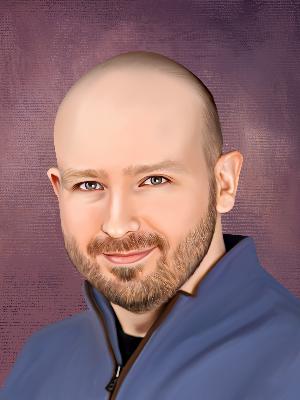

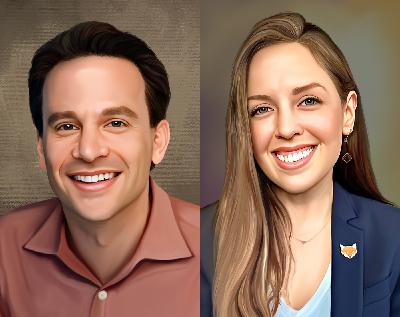
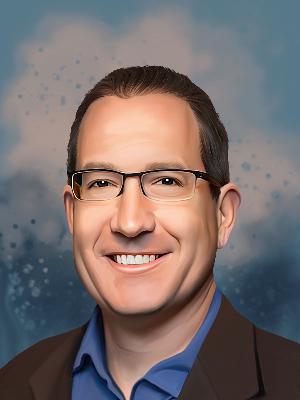




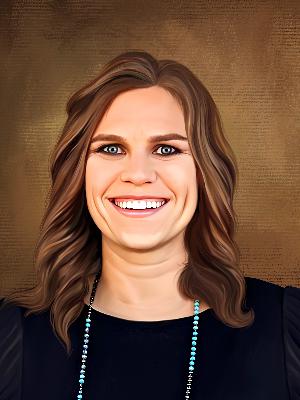
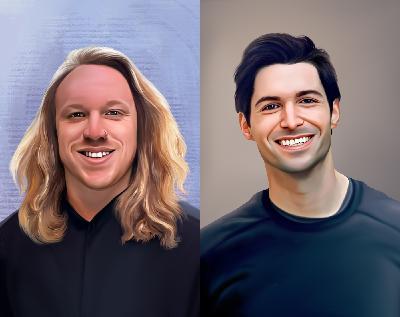
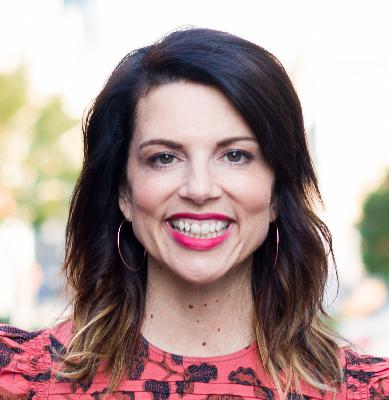


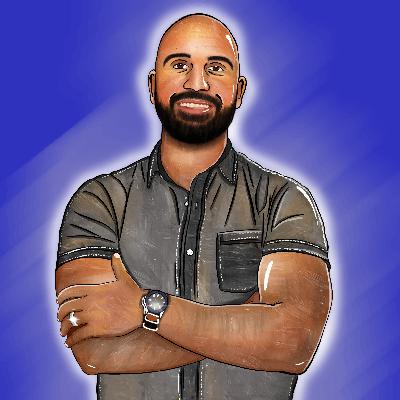


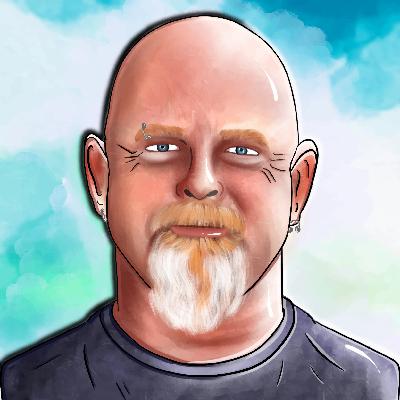


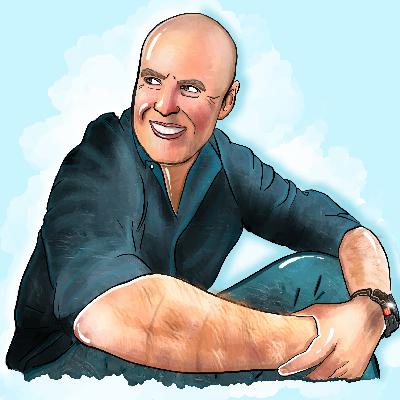



Great interview, even better episode descriptions! Lookin forward to future episodes.